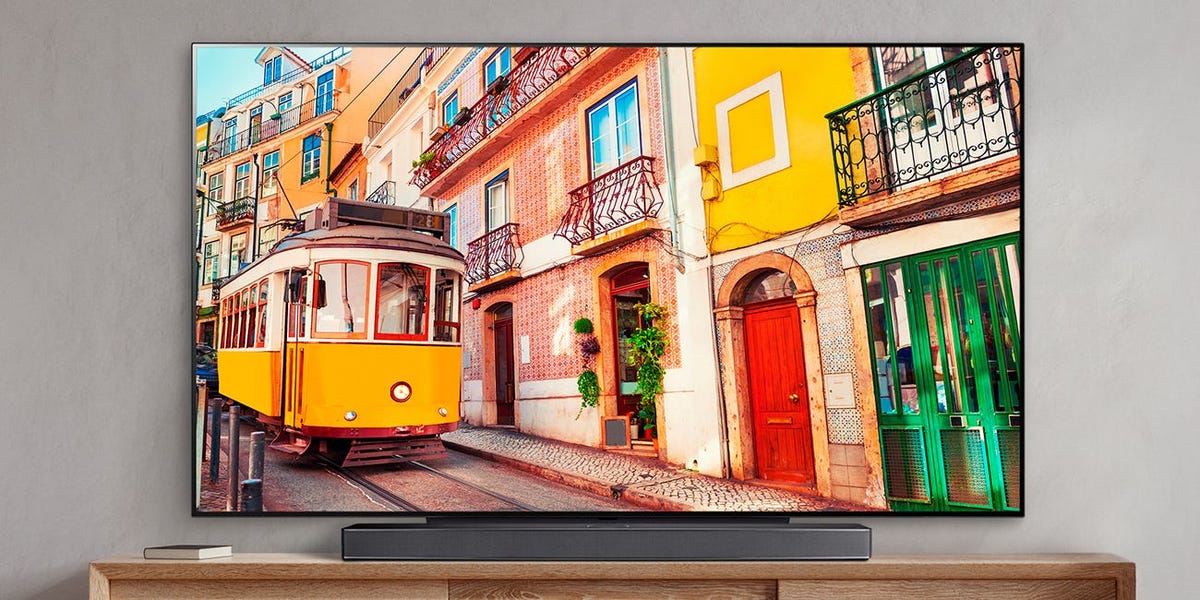When you buy through our links, Business Insider may earn an affiliate commission. Learn more
When shopping for a new TV, size is one of the first things you’ll need to settle on. Models are available across a wide range of options, with 55 inches being a popular pick for people who want a medium-sized display. Entry-level sets can be found for under $300, and many brands offer 55-inch versions of their top TVs with all of the advanced features you’d get on a bigger size. The best 55-inch TVs can offer excellent picture quality while still being large enough to show off the benefits of 4K resolution.
Based on a combination of hands-on testing and research bolstered by a decade’s experience covering the home entertainment industry, we’ve picked the five best 55-inch TVs you can buy. Our top recommendation is the LG C3, which delivers fantastic contrast thanks to its OLED screen while often costing less than similar 55-inch sets from other brands. But if you want to spend under $500, we recommend the Hisense U6K. It produces a wide range of vivid colors and is the cheapest Mini LED TV on the market.
Below, you can find all five of our picks for the best 55-inch TVs, including a high-end option for home theater enthusiasts and a cheap entry-level model great for casual buyers.
Our top picks for the best 55-inch TVs
Best overall: LG C3 4K OLED TV – See at Amazon
Best premium display: Sony A95L 4K OLED TV – See at Amazon
Best midrange: Hisense U7K 4K QLED TV – See at Amazon
Best under $500: Hisense U6K 4K QLED TV – See at Amazon
Best entry-level model: TCL Q5 4K TV – See at Best Buy
Best overall
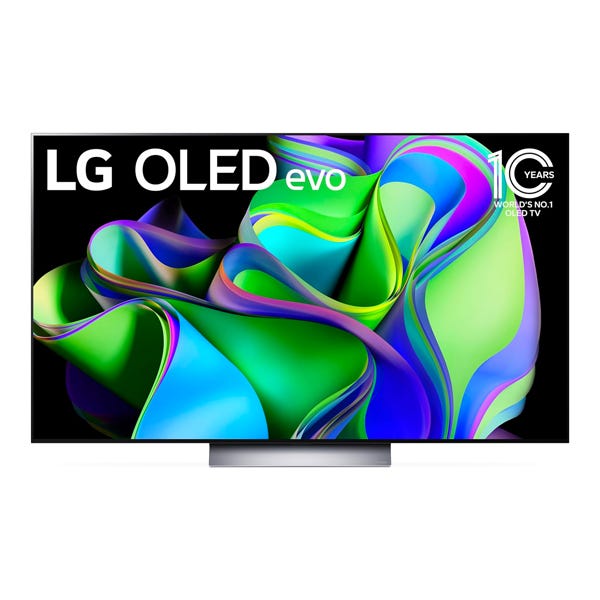
LG 55-inch C3 OLED 4K TV
The C3 delivers excellent contrast thanks to its OLED Evo panel, and the 55-inch option is cheaper than similar OLEDs from other brands.
Under most circumstances, we recommend the Samsung S90C as the best TV you can buy, but LG’s C3 often has a slight edge if you’re specifically looking for a 55-inch display. The key factor at this size is price. The 55-inch C3 is usually at least $200 cheaper than the 55-inch S90C, while the 65-inch models of both TVs are typically sold at matching prices.
When they cost the same, the S90C is the winner since it has a brighter image and higher color volume. But when you can save a couple hundred bucks going with the C3, we veer toward recommending LG’s TV. While its peak brightness of 800 nits can’t match the S90C’s 1,000 nits, it still gets bright enough for average living rooms and delivers the same pixel-level contrast that all OLEDs are known for. This means you’ll get deep black levels that disappear in a dark room and intense high-dynamic range (HDR) highlights without any of the halos that can appear around bright objects on some QLED TVs.
And unlike even the best Samsung TVs, the C3 supports Dolby Vision to provide the most accurate HDR image from streaming services like Disney Plus and Netflix. Viewing angles on the C3 are also excellent, so the picture doesn’t dramatically fade or distort when you sit off to the side of the TV. The display is a great pick for gamers, too, thanks to its low input lag and fast 120Hz refresh rate for smooth gameplay on a PS5 or Xbox Series X. LG’s webOS smart TV platform is solid as well, and with the included Magic Remote, you can navigate through the menus via physical buttons or motion controls by pointing the remote at the screen and moving a mouse-like cursor.
If you don’t mind paying a bit more or if you happen to find it on sale, the Samsung S90C is a strong alternative that can deliver a brighter, slightly more vivid image. But, when comparing both models at typical street prices, we think the LG C3 is the best 55-inch TV overall. Buyers should keep in mind that LG will be releasing a 2024 “C4” version of this display later this year, but we don’t expect a big performance increase and see little reason to wait for the updated model.
Best premium display
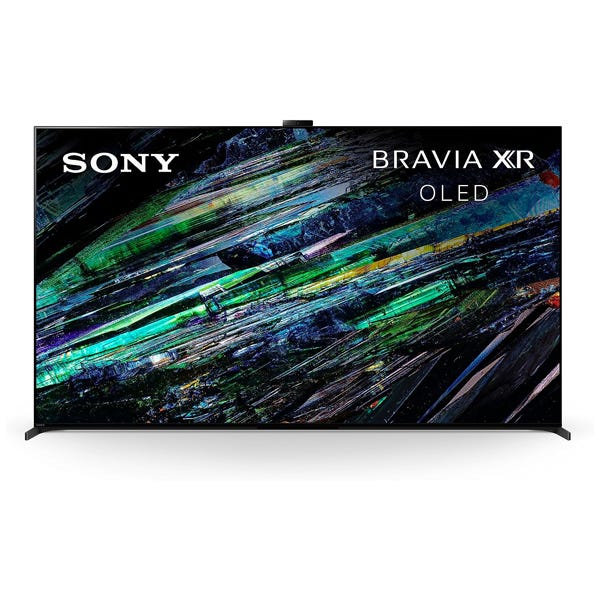
Sony 55-inch A95L OLED 4K TV
Sony’s A95L is the best high-end TV you can buy. Though pricey, its QD-OLED panel offers the most impressive picture quality we’ve seen.
The Sony A95L is the best premium 55-inch TV you can buy. Competing displays from LG and Samsung get close, but the A95L has an edge.
The TV uses a QD-OLED panel to offer pixel-level contrast and industry-leading color performance. The A95L is also the brightest OLED we’ve ever tested. We measured a peak of around 1,500 nits in our brightness test pattern, a whopping 500 nits more than its predecessor, the A95K, and slightly more than this TV’s closest rival, the LG G3. The A95L can only hit that number when displaying small bright elements on the screen, but that’s still an incredible feat for an OLED display.
This impressive brightness allows the A95L to deliver exceptional HDR images. Black levels disappear into a dark room, while specular highlights shine with pinpoint accuracy and no blooming. If you watch TV in a home theater setting, the A95L simply dazzles.
Sony’s proprietary picture processing enables image accuracy that edges out rival brands, with impressive upscaling that minimizes flaws in lower-quality sources, like HD feeds from streaming services, cable, and an indoor TV antenna. Viewing angles are also top-notch, so you don’t have to worry about colors distorting when sitting off-center.
The A95L’s Google TV operating system works well, too, and the included Google Assistant voice remote has a premium feel with a handy backlight that automatically turns on when you pick it up. A webcam is also included, which supports video calls and gesture controls. The TV’s stand can even be configured in a high- or low-profile mode depending on whether you want to put a soundbar in front of it.
The only notable feature missing is 144Hz support, which is something that Samsung, Hisense, and TCL offer on some of their higher-end TVs when you pair them with a gaming PC. But if you’re using a console, like a PS5 or Xbox Series X, you can rest easy knowing you’ll still get full 120Hz support.
Given its price, the A95L is geared toward big home theater enthusiasts willing to pay top dollar for top performance. Most buyers will be satisfied with any of the less expensive 55-inch TVs we recommend, but if money is no object, the A95L is the TV to get.
Best midrange option
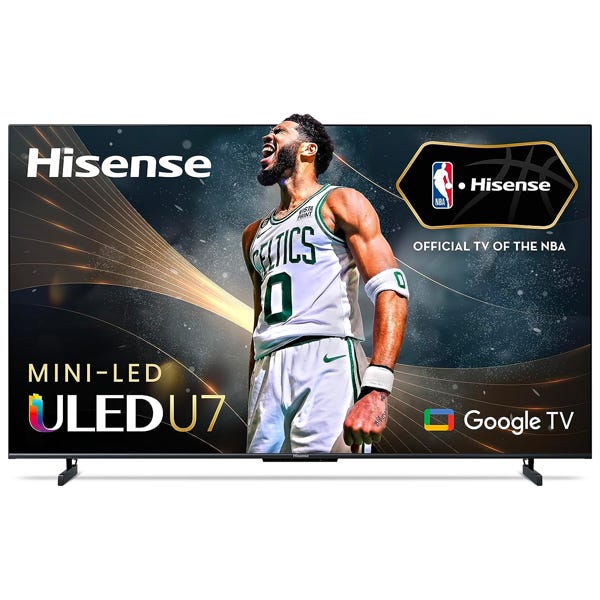
Hisense 55-inch U7K QLED 4K TV
The Hisense U7K delivers great picture performance for its class, with excellent HDR brightness and advanced gaming features.
The Hisense U7K is a midrange 55-inch TV that punches way above its class. Like the cheaper U6K, this model uses a QLED panel with a Mini LED backlight. But the U7K steps things up with a higher peak brightness of 1,000 nits and a refresh rate of up to 144Hz, which makes it an excellent gaming display.
The TV’s local dimming delivers high contrast with great black levels, and its bright highlights allow it to provide a more realistic HDR experience than the U6K. It still has fewer dimming zones than more expensive QLED models, which could create some brightness fluctuations. But for the money, the U7K’s performance is impressive.
On the downside, like the U6K, the U7K’s Google TV OS can be a little sluggish, and the display’s image quality degrades if you sit too far off to the side of the screen, but these issues are common for QLED models in this price range. The display is also prone to some minor uniformity issues that can cause a subtle “dirty screen” effect during some panning motions. However, this was rarely noticeable during our tests.
The 55-inch U7K’s price fluctuates, but it’s almost always $650 or less, which makes it tough to beat. The TV’s closest competitor is the 55-inch TCL Q7, which delivers similar performance but uses regular-sized LEDs rather than Mini LEDs. This gives the Q7 less control over local dimming. That said, if you find the Q7 on sale for less than the U7K, it’s a worthwhile alternative.
Read our Hisense U7K 4K TV review.
Best under $500
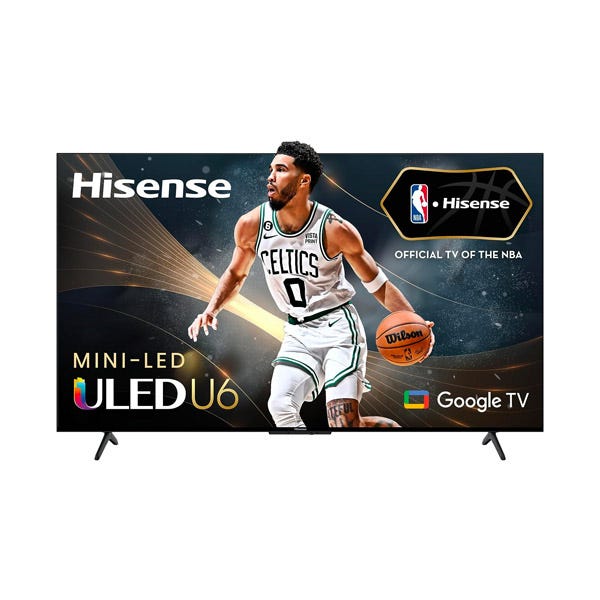
Hisense 55-inch U6K QLED 4K TV
Hisense’s U6K is one of the best budget 4K TVs you can buy. It has quantum dots, local dimming, and a Mini LED backlight to deliver better contrast and color performance than virtually any competitor in its price range.
Buyers who want the best 55-inch TV under $500 should look no further than the Hisense U6K. Though the 55-inch model technically carries a full retail price of $580, it’s almost always on sale for $450 or less.
Unlike most TVs in this price range, the U6K doesn’t skimp on advanced picture quality features. It’s the most affordable TV on the market that has a Mini LED backlight with local dimming and quantum dots. This gives it unmatched color and contrast performance for the money. With a max of around 600 nits, the display gets bright enough to show off the benefits of HDR content, and it has solid black levels with minimal blooming.
However, the U6K isn’t as bright as more expensive QLEDs, and its contrast control isn’t anywhere near as precise as an OLED. The display also demonstrated lackluster viewing angles during our testing, which means colors and contrast fade when you sit to the side of the TV. Hardcore gamers may also want to splurge for a step-up model since the U6K only has a 60Hz panel rather than a 120Hz one.
The U6K uses the Google TV operating system, and its interface and Google Assistant voice remote are solid. However, navigation can be a bit sluggish compared to higher-end models. But despite a few drawbacks here and there, the U6K’s picture quality beats every other TV in its class. This is the best 55-inch TV to buy if you want a budget display that doesn’t sacrifice HDR performance.
Read our Hisense U6K 4K TV review.
Best entry-level

TCL Q5 55-inch Google TV
This 55-inch TCL TV uses a QLED panel, which offers great color performance. It lacks local dimming and native 120Hz support but otherwise has all the trappings needed for modern gaming and home cinemas. This is an excellent deal price for a 55-inch set in this class.
Though we previously recommended TCL’s step-down S4 model in this spot, a recent price drop has made the Q5 a much better value in this class. At under $300 for the 55-inch model, the Q5 is an excellent entry-level TV for buyers who favor affordability over advanced image quality features. That said, the Q5 is no slouch regarding color performance.
Despite its low price, the Q5 uses a QLED panel with quantum dots to provide a wide color gamut, just like our pricier picks in this guide. But the Q5 doesn’t have local dimming to dim and brighten its image across specific zones. Instead, it has a standard direct-lit backlight. As a result, the TV’s contrast is lower, and its black levels aren’t as deep as the other displays we recommend, which can cause dark scenes to look washed out if you watch TV with the lights off. Colors and contrast also distort if you sit off to the side of the screen, but that’s common for any TV this inexpensive.
Peak brightness is limited to around 400 nits, which is fine for standard dynamic range (SDR) content but on the low side for HDR playback. We recommend you pay more for the Hisense U6K if you want a budget-friendly TV with HDR in mind. Gaming performance is also a mixed bag. The panel can support 120Hz when displaying 1440p or 1080p resolution, but it’s limited to 60Hz with 4K.
However, the Q5 is a solid option if you just want basic 4K playback, and its color performance is noticeably better than most other TVs in this price range. Integrated support for the Google TV platform and a voice remote round out the package, offering reliable playback from all the best streaming services.
How we test 55-inch TVs
A test pattern used to measure a TV’s peak brightness.
Steven Cohen/Business Insider
To select the best 55-inch TVs, our team relies on a combination of hands-on testing and research informed by more than 10 years of experience reviewing home entertainment products.
When we review TVs, most brands send us their 65-inch screen size, considered the industry’s flagship offering. However, a TV model’s overall performance usually remains comparable across sizes 50 inches and above. For instance, a 65-inch Sony A95L OLED and a 55-inch A95L have the same basic specs and capabilities. The only notable difference is the size of the screen.
However, some TVs that use local dimming, like the Hisense U7K, will employ fewer zones in smaller screen sizes versus larger ones. This can lead to slight differences in contrast performance when comparing a 55-inch model to another size, but not enough to alter our general impressions of that model. Occasionally, there are bigger differences in design and features across different sizes, and we note those details when applicable.
To test TVs, we look at picture clarity, contrast, peak brightness, color performance, viewing angles, gaming capabilities, smart TV navigation, and overall value. We measure HDR brightness with an X-Rite iDisplay Plus colorimeter and use test patterns on the Spears & Munsil UHD HDR Benchmark 4K Blu-ray disc to evaluate other objective display parameters.
But test patterns can only reveal so much, so we watch plenty of actual movies and shows to see how a TV performs with real-world content on a day-to-day basis. We revisit various scenes on each TV we test that we’ve specifically chosen to examine black levels, shadow details, HDR highlights, and upscaling. Our demo content includes 4K, 1080p high definition (HD), and standard definition (SD) material from various sources like Blu-ray discs, streaming services, and cable TV.
55-inch TV FAQs
Ryan Waniata/Insider
Is 55 inches a good size for a TV?
A screen size of 55 inches is a great choice for various rooms. This size is still big enough to feel immersive in smaller living rooms while offering a more compact alternative to 65-inch models that might be too big for some spaces.
A 55-inch TV is also a great fit for a bedroom where you might want something smaller than what you’ve got in your living room but not so compact that you must sacrifice picture quality features. Most brands’ best 4K TVs are available in 55-inch options, but many higher-end displays are not sold in sizes below that. For instance, if you want one of Samsung or Sony’s best OLED TVs, 55 inches is the smallest size available.
How much should a 55-inch TV cost?
The best 55-inch TVs vary in price, with entry-level options starting at below $300 and high-end options costing $2,000 or more.
If you want a midrange 55-inch TV, you should plan to spend about $400-$700. Several great 55-inch QLED models in that price range include quantum dots, local dimming, and Mini LED backlights to deliver good contrast and peak brightness levels as high as 1,000 nits.
Shoppers who want a 55-inch OLED TV rather than a QLED will have to pay more, with prices starting at around $1,200. Though notably more expensive than their QLED counterparts, OLED TVs offer pixel-level brightness control for superior contrast and black levels.
How far should you sit from a 55-inch 4K TV?
The smaller a 4K screen is, the closer you’ll need to sit to the display to see the full benefits of its resolution. To see the extra detail that 4K offers over 1080p Full HD, you’ll want to sit at a distance of about one to 1.5 times the size of your display. For a 55-inch 4K TV, the recommended viewing distance is between 4.6 and 6.9 feet from your TV.
Of course, you can still sit farther away from your TV and enjoy its image quality, but the recommended distance will allow you to see the best level of detail. For rooms where you’d need to sit far from your display, we recommend opting for a larger screen size to get the full benefits of 4K. Check out our guides to the best 65-inch TVs and best 75-inch TVs for our top recommendations.
